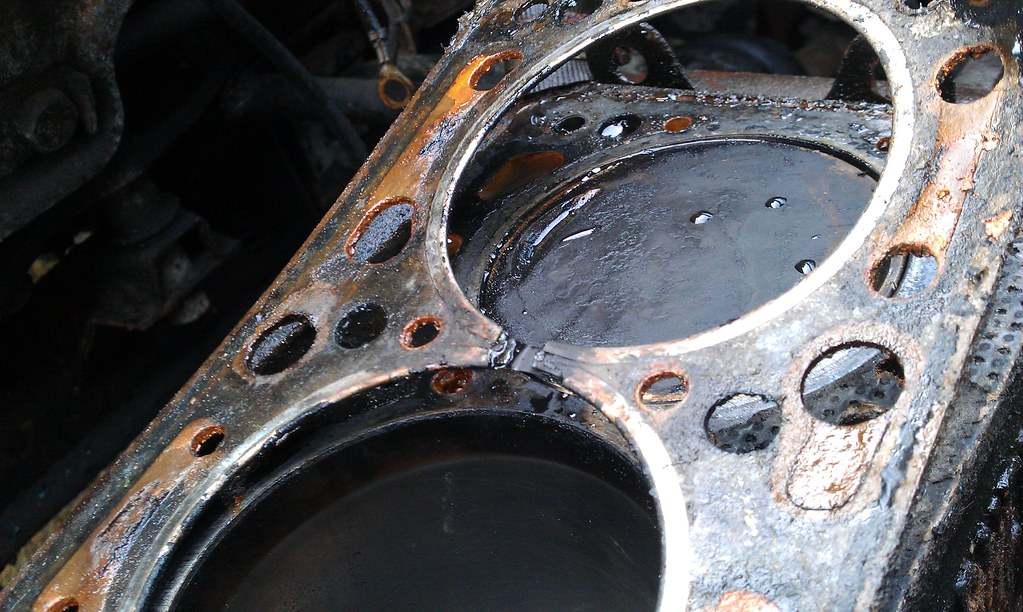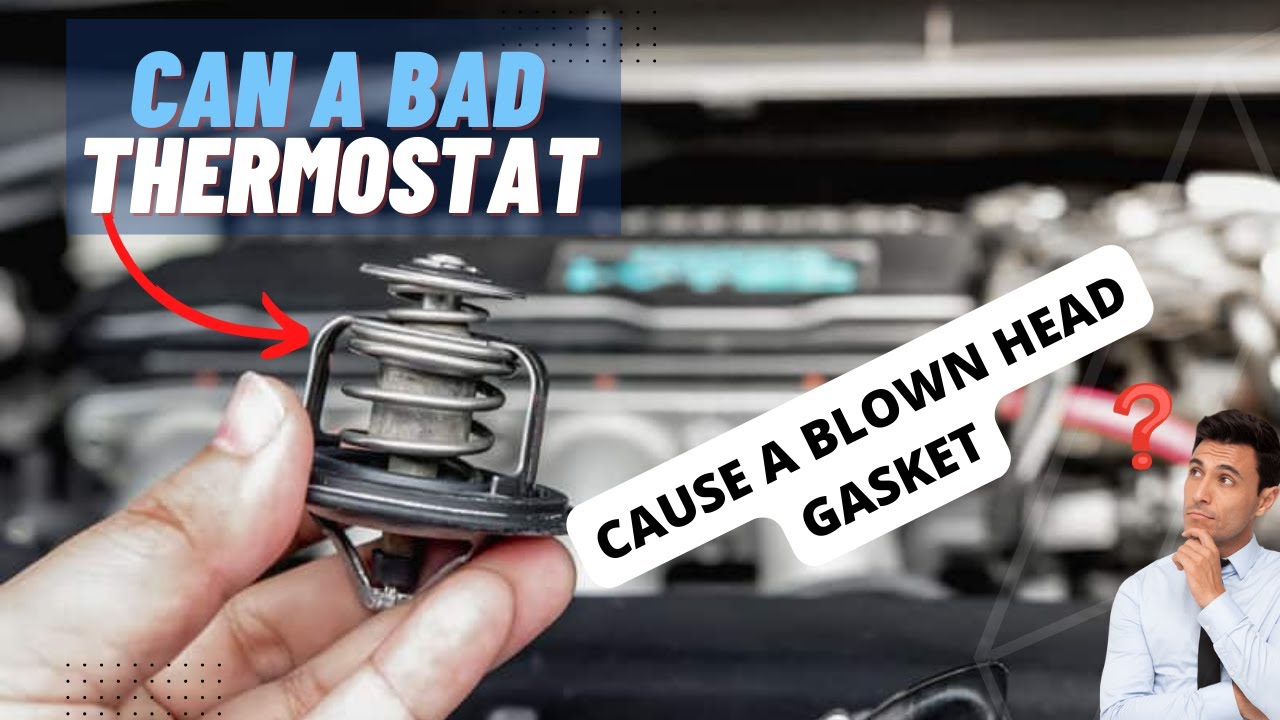Can a Bad Thermostat Cause a Blown Head Gasket?
A bad thermostat cannot directly cause a blown head gasket. However, it can contribute to overheating, which can ultimately lead to a blown head gasket.
If a thermostat fails to open or close properly, it may result in the engine running hotter than normal, causing increased pressure in the cooling system, and potentially leading to a blown head gasket over time. Remember to regularly maintain your thermostat and cooling system to avoid costly engine repairs.
Understanding The Relationship Between Thermostat And Head Gasket Failure
The relationship between a bad thermostat and a blown head gasket in a car engine is intricate and deserves a closer look. Essentially, the thermostat plays a crucial role in maintaining the engine’s optimal operating temperature by regulating the flow of coolant. It ensures that the engine doesn’t overheat or stay too cool. On the other hand, the head gasket seals the cylinder head and engine block, preventing any coolant or oil from mixing together. It also creates compression within the combustion chamber.
The interplay between the thermostat and the head gasket is vital. If the thermostat malfunctions, it can cause the engine to overheat or stay too cold, which can put excessive stress on the head gasket. In extreme cases, the thermostat failure can lead to a blown head gasket. However, it’s important to note that a bad thermostat alone is rarely the sole cause of a blown head gasket. Other factors such as engine overheating, coolant leaks, or improper maintenance can exacerbate the situation.
Signs Of A Bad Thermostat And Blown Head Gasket
Can a Bad Thermostat Cause a Blown Head Gasket?
Common Symptoms Of A Faulty Thermostat
When your thermostat is malfunctioning, several signs may manifest. Your engine temperature may fluctuate rapidly, leading to overheating issues or a constantly cold engine. Furthermore, the heater may not produce enough warmth even when fully turned on. Pay attention to reduced fuel efficiency or a visible coolant leak as well.
Indicators Of A Blown Head Gasket
If you suspect a blown head gasket, be on the lookout for white smoke coming from your exhaust, coolant mixing with engine oil resulting in a milky substance, or an overheated engine. Additionally, you may experience engine misfires, low coolant levels, or the presence of white, sweet-smelling exhaust fumes.
Overlapping Symptoms That Could Be Caused By Both Issues
In some cases, symptoms of a bad thermostat and a blown head gasket may overlap. These include engine overheating, poor performance, or coolant leaks. While a faulty thermostat can lead to a blown head gasket in extreme cases, it is crucial to diagnose and address each problem independently to ensure accurate repairs.
Exploring The Potential Link Between A Bad Thermostat And Blown Head Gasket
Can a bad thermostat cause a blown head gasket? The potential link between a bad thermostat and a blown head gasket can be explored by analyzing the impact of an overheating engine. A bad thermostat can contribute to engine overheating by failing to regulate the coolant flow properly. This can lead to the engine reaching high temperatures, causing the head gasket to blow.
Prolonged engine overheating can have severe consequences. The excessive heat can cause the head gasket to weaken or fail completely, allowing coolant and oil to mix. This can result in engine damage and expensive repairs.
Can A Bad Thermostat Lead To A Blown Head Gasket?
Understanding the mechanism behind a blown head gasket is crucial in assessing the role of a bad thermostat in causing this issue. A blown head gasket occurs when there is a breach in the seal between the engine block and the cylinder head. This can lead to a variety of problems, including engine overheating.
Engine overheating is a common factor in head gasket failure. When the engine gets too hot, it expands, putting pressure on the gasket. Over time, this can cause the gasket to weaken and eventually fail. A bad thermostat is one potential cause of engine overheating.
A thermostat is responsible for regulating the coolant flow through the engine. If a thermostat becomes faulty, it can get stuck in the closed position, preventing coolant from circulating properly. Without the proper coolant circulation, the engine can quickly overheat, increasing the risk of a blown head gasket.
While a bad thermostat can contribute to engine overheating, it is important to note that there are other factors at play as well. Regular maintenance, such as checking coolant levels and replacing old gaskets, is essential in preventing head gasket failure. Additionally, addressing any underlying issues that may be causing the thermostat to malfunction is crucial in preserving the health of your engine.
Preventive Measures To Avoid Thermostat-related Head Gasket Problems
Regular maintenance of the thermostat is crucial in preventing head gasket failure. Here are a few tips:
- Ensure that the thermostat is functioning correctly and maintaining the optimal temperature range for your vehicle.
- Check for any signs of wear or damage, such as cracks, leaks, or sticking valves, and replace the thermostat if necessary.
- Regularly flush and refill the coolant system to prevent deposits and blockages that may affect the thermostat’s performance.
- Consider factors such as durability, compatibility, and ease of installation when choosing a new thermostat for your vehicle.
- Follow the manufacturer’s recommendations for thermostat replacement intervals.
- Properly bleed the coolant system after replacing the thermostat to ensure proper functioning and prevent air pockets.
By following these preventive measures, you can reduce the risk of thermostat-related issues that could potentially lead to head gasket problems in your vehicle.
Addressing Thermostat And Head Gasket Issues
A faulty thermostat can indeed cause a blown head gasket. When the thermostat fails to regulate the engine’s temperature properly, it can lead to overheating, which puts excessive strain on the head gasket. Diagnosing a faulty thermostat can be done by observing signs such as irregular engine temperature, coolant leakage, or a heater that blows only cold air. In such cases, it is important to address the issue promptly to prevent further damage.
If a blown head gasket is confirmed, repairing or replacing it is crucial to avoid major engine damage. This involves careful inspection and sometimes engine disassembly to access the head gasket. While some DIY enthusiasts may attempt this task, seeking professional assistance is recommended to ensure proper repair and avoid any errors that may lead to more expensive repairs in the future.
In conclusion, a bad thermostat can contribute to a blown head gasket, making it essential to address thermostat and head gasket issues promptly to prevent further engine damage. Seeking expert help for diagnosis and repairs is advisable for accurate assessment and effective resolution of engine cooling system problems.

Credit: carfromjapan.com
Frequently Asked Questions On Can A Bad Thermostat Cause A Blown Head Gasket?
Is It My Thermostat Or Head Gasket?
If your car is overheating, it could be due to either a faulty thermostat or a blown head gasket. It’s best to consult a mechanic to properly diagnose and fix the problem.
What Is The Most Common Cause Of A Blown Head Gasket?
The most common cause of a blown head gasket is engine overheating due to coolant leaks or improper cooling system maintenance. Overheating can result in the gasket becoming weaker and eventually failing, causing coolant and oil mixture to leak and potential engine damage.
What Causes A Head Gasket To Fail?
The failure of a head gasket can be caused by overheating, engine problems, or poor maintenance.
What Can Be Mistaken For A Blown Head Gasket?
A blown head gasket can be mistaken for issues like overheating engine, coolant leaks, loss of power, white smoke from exhaust, and milky oil.
Conclusion
A malfunctioning thermostat can have serious consequences for your vehicle, including the possibility of a blown head gasket. It is crucial to address thermostat issues promptly to prevent overheating and damage to the engine. Regular maintenance, such as thermostat replacement, can help avoid costly repairs and ensure optimal engine performance.
Take proactive measures to keep your thermostat in check for a smooth-running vehicle.
